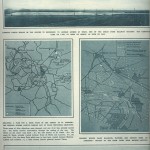Some days ago we have participated to the awards ceremony for the Think Space architectural competition in Zagreb. The three days meeting, so-called: “Unconference” consisted in a full time schedule of debates, round tables, conferences and workshops where we had the opportunity to meet and discuss with several remarkable young architects. You can have an idea looking at these photos here.
Strong visions and ideas worth spreading have resulted from the competition, we have thus asked some of the participants to let us publish their entries here on Socks, too.
Erin Ota and Caroline Smith, ex-aequo winners for the Moral Borders section of Think Space have been so nice to share with us their challenging entry “We can’t buy, so we occupy”.
They also provided some deeper insight on their work, writing us an extended description.
Erin Ota earned a B.Arts in Economics and B.Architecture from Virginia Tech (US), latter was partly completed through The Architectural Association (UK), and through CESA (CH). Her thesis project, “The Economic Returns to Suburban Leisure” shows her professional interests, which intersect Architecture, Development Economics, Social Entrepreneurship, and Public Policy.
Caroline Filice Smith is an Architect, Fabricator and Researcher currently operating from the LA Occupation Zone (Occupy LA; in solidarity with occupations everywhere) where she is continuing her studies on the role of architecture and planning within capitalist power structures and people’s movements.

“We can’t buy, so we occupy”
by Erin Ota and Caroline Smith
The proposal is a suburban retrofit, catalyzed by a social networking website. It alters (3) conditions:
1. Suburbia’s lack of public space [parks, plazas, atriums] for civil consciousness outside of consumption or production. While free public spaces are marginalized in enclaves, strip malls anchor main roads; becoming the most accessible public space along one’s daily commute.
The project contrasts the contrived exercise of citizenship [simply buying into [gated] communities]. Through the website, one actively chooses their neighbors.
2. The insecure rights to one’s labor.
If:
one can secure rights to life, liberty, and property through the right to the products of their labor
and if:
the products of contemporary labor are income and good credit
and if:
one’s income and credit is illegally redistributed through mismanaged accounting by an institution
Then:
one cannot secure their rights to the products of their labor, nor the rights to life, liberty, and property.
The project’s website facilitates a bartering system. Ubiquitous Wifi mitigates bartering markets’ shortcomings in efficiently locating one to one trades.
3. The excess of the [foreclosed] suburban landscape and lack of affordability for forthcoming
homeowners.
The project infiltrates subdivided suburban homes, yards, and various public spaces in the U.S. that have been overlooked [as sites for permanent occupation] by local zoning protocols. As Social Security dwindles, baby-booming homeowners exchange property for [caretaking] services.




Why:
The U.S. production system is yielding an inefficient allocation of resources.
As student loans continue to accumulate interest in a stagnate job market, the returns to one’s investment in higher education are placed further out of reach for the forthcoming generation of homeowners.
While governments and banking institutions mitigate the damage of a market predicated on loans lacking substantial cash flow, baby-booming parents forgo retirement and continue to financially support this generation of the invisible homeless; placing opportunities to build credit for home ownership, further into the future, at the same rate that student loans accumulate interest.
As government spending on this mitigation endangers Social Security, and the construction of hospitals, hospices, and retirement homes to support the baby-booming demographic, a large sector of educated youth remain unemployed or underutilized, and foreclosed homes, unoccupied.
In addition to the inefficient allocation of home ownership, irresponsible management of loans lacking substantial cash flow suggest an inefficient allocation of moral resources.
If one is endowed with the rights to life, liberty, and property, and if … then one does not have the rights to life, liberty, and property in the contemporary socio-economic system.
The inefficient allocation of [moral] resources is reinforced by the suburban typology, which reinforces insecurity over the rights to one’s labor by denying accessibility to collective civil consciousness outside of consumption or production.
Designed to be most traversable by the car, main roads between offices, homes, and grocery stores are tightly flanked by readily accessible strip malls. Effectively, the typology has not only reduced collective agency to consumption and production, but in substituting accessibility to free public spaces (1) with strip malls that require one to consume, it discourages residents’ saving and necessitates additional labor, which could be avoided under a different spatial regime.
Historically, one could argue that overall economic welfare from this excess consumption could offset the losses to local residents and firms because taxes would redirect it towards civic projects.
This argument becomes outdated in the context of suburbia’s relationship to the contemporary strip mall.
Not only is the majority of excess consumption from conglomerates of global corporations, whose largest shareholders do not reside locally enough for this to become operational; but a majority of the goods consumed in excess sidestep international trade policies, which traditionally would distribute tariffs, quotas, or subsidies to appropriately redirect this economic welfare.
Statement:
The utopia improves the efficient allocation of [moral] resources by infiltrating the excess of the U.S. suburban landscape.
It proposes to do this with a social media application that facilitates a bartering system of goods and services, and allows one to choose neighbors based on posted profiles.
Who
The subject is the forthcoming generation of home owners reaching an inflection point within the globally dependent market – where the nations’ artificial abundance of affordable food, water, shelter, healthcare, and education, has been a product of international trade, dependent on finite energy resources and a fallacy of [inter]national credit.
For this generation, perpetuating the cycle of suburban home ownership is neither economically viable, nor ecologically sustainable. Accessibility to affordable food, water, shelter, healthcare, and education is an extinct possibility, and leasing strategies flirting with indentured servitude to student loans, car payments, and government bailouts, the temporary reality.
The subjects’ battle cry: We can’t buy, so we occupy!
Where
The subject temporarily infiltrates subdivided suburban homes, yards, and various public spaces in the U.S. that have been overlooked [as sites for permanent occupation] by local zoning protocols. The size of the occupation varies at any point in time, as territories of legislative conflict reevaluate outdated policies, and a real-time map of occupation zones is updated on the internet.
How
The real-time map is updated by the organization, Occupy! The organization posts available [wanted] spaces for occupation, and hosts a social networking platform so one can actively choose their neighbors.
Living in closer proximity to their neighbors, with an awareness of each other’s skills and interests, community resources are pooled together, informal economies develop, and a local bartering system of goods and services becomes the primary mode of exchange.
What
The digital platform for community amenities depends on the shifting zonings for occupation. The personal is spatial. In a state of flux, communities are retrofitted, recycled, downsized, re-built, evicted, and infiltrated. In the process of repurposing the excess of the suburban landscape, shifting territories become the evening news, and spatial data mining, a new discipline in marketing research.
Synthesis
As suburban homes are deconstructed, sprawl contracts in occupation zones. The small zones necessitate a consolidated design, facilitating the emergence of ‘plazas.’ Where [now] deconstructed homes once stood, zones for public forums (assemblies, schools, workshops) manifest themselves. As zones of occupation swell with the highly-educated, and the technically skilled, peoples-collective universities begin to form between adjacent occupations; creating a society built upon education as a right, and social duty, instead of a for-profit mandate. Education as Sport.





Leave a Reply